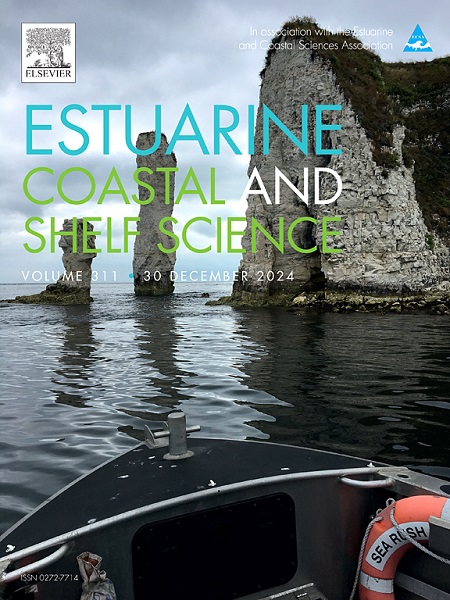Contrasting beta-diversity patterns of temperate coastal fish species and their functional traits
IF 2.6
3区 地球科学
Q1 MARINE & FRESHWATER BIOLOGY
引用次数: 0
Abstract
Useful measurements of biodiversity for the purpose of conservation planning are dependent on describing appropriate biological characteristics of assemblages at a representative spatial scale. Defining ecological connectivity and composition over the extents of a management region can provide insights on the spatial ecology of assemblages intended for protection. Here we investigated the biogeographic patterns in both taxonomic and functional beta-diversity of fish assemblages from two depth strata (infralittoral and circalittoral reefs) across 800 km of exposed coastline on the south-east Australian continental margin, including six no-take marine protected areas. A general increase in both functional and taxonomic beta-diversity from west to east was observed using a null modelling approach. Notably, patterns in functional beta-diversity were largely attributed to the nestedness component of beta-diversity between sites in contrast with taxonomic beta-diversity which showed patterns related mostly to species turnover. Defining functional and species beta-diversity of marine fish revealed these metrics did not always follow analogous patterns, despite the ecological niche similarities in the assemblages sampled across sites. This investigation of functional and taxonomic diversity can inform the inherent ecological resilience of assemblages across differing bio-regional scales. Furthermore, the application provides a unique and comparable representation of functional and taxonomic characteristics using existing biological datasets.
温带沿海鱼类β -多样性格局对比及其功能特征
对生物多样性的有效测量依赖于在一个具有代表性的空间尺度上描述群落的适当生物特征。定义管理区域范围内的生态连通性和组成,可以为保护组合的空间生态学提供见解。在这里,我们研究了澳大利亚东南部大陆边缘800公里暴露海岸线上的两个深层地层(沿海下和沿海环礁)鱼类组合的分类和功能多样性的生物地理格局,包括6个禁止捕捞的海洋保护区。使用零模型方法观察到从西到东的功能和分类多样性普遍增加。值得注意的是,功能性β -多样性的模式主要归因于位点间β -多样性的巢性成分,而分类学β -多样性的模式主要与物种更替有关。对海洋鱼类的功能和物种多样性的定义表明,这些指标并不总是遵循类似的模式,尽管在不同地点取样的组合中存在生态位相似性。这种功能和分类多样性的研究可以揭示不同生物区域尺度组合的内在生态弹性。此外,该应用程序使用现有的生物数据集提供了功能和分类特征的独特和可比较的表示。
本文章由计算机程序翻译,如有差异,请以英文原文为准。
求助全文
约1分钟内获得全文
求助全文
来源期刊
CiteScore
5.60
自引率
7.10%
发文量
374
审稿时长
9 months
期刊介绍:
Estuarine, Coastal and Shelf Science is an international multidisciplinary journal devoted to the analysis of saline water phenomena ranging from the outer edge of the continental shelf to the upper limits of the tidal zone. The journal provides a unique forum, unifying the multidisciplinary approaches to the study of the oceanography of estuaries, coastal zones, and continental shelf seas. It features original research papers, review papers and short communications treating such disciplines as zoology, botany, geology, sedimentology, physical oceanography.

 求助内容:
求助内容: 应助结果提醒方式:
应助结果提醒方式:


